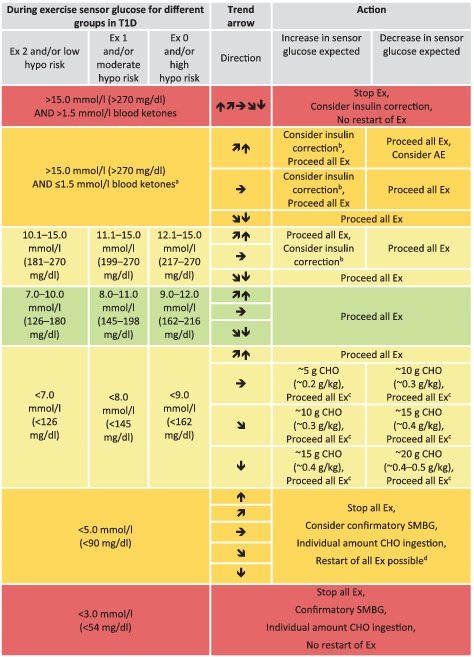TABLE 6.
Sensor glucose targets during exercise in regard to different groups of children and adolescents with type 1 diabetes

|
Note: Sensor glucose targets are detailed for the following groups in type 1 diabetes (T1D): intensively exercising and/or low risk of hypoglycaemia (Ex 2); moderately exercising and/or moderate risk of hypoglycaemia (Ex 1); minimally exercising and/or high risk of hypoglycaemia (Ex 0).
When reaching the required sensor glucose level during exercise, only consume carbohydrates again when the trend arrow is starting to decrease.
These recommendations are not applicable to hybrid closed‐loop systems.
Green shading, no/minimal action required; light‐yellow shading, minimal/moderate action required; dark‐yellow shading, moderate/intense action required; red shading, stop exercise.
AE, mild‐to‐moderate intensity aerobic exercise; CHO, carbohydrates; Ex, exercise; hypo, hypoglycaemia.
Elevated blood ketone levels should lead to repeated controls after exercise to ensure that ketosis (blood ketones >1.5 mmoL/L) or diabetic ketoacidosis is not developed. If sensor glucose is >15.0 mmoL/L (>270 mg/dL) and blood ketones are ≤1.5 mmoL/L, then only mild aerobic exercise may be performed.
50% of regular insulin correction factor when sensor glucose is close to the upper glycaemic threshold.
Restart exercise when reaching at least sensor glucose levels of 5.0 mmoL/L (90 mg/dL) and  or
or 
Check sensor glucose at least 30 min after carbohydrate consumption and repeat treatment if required.
